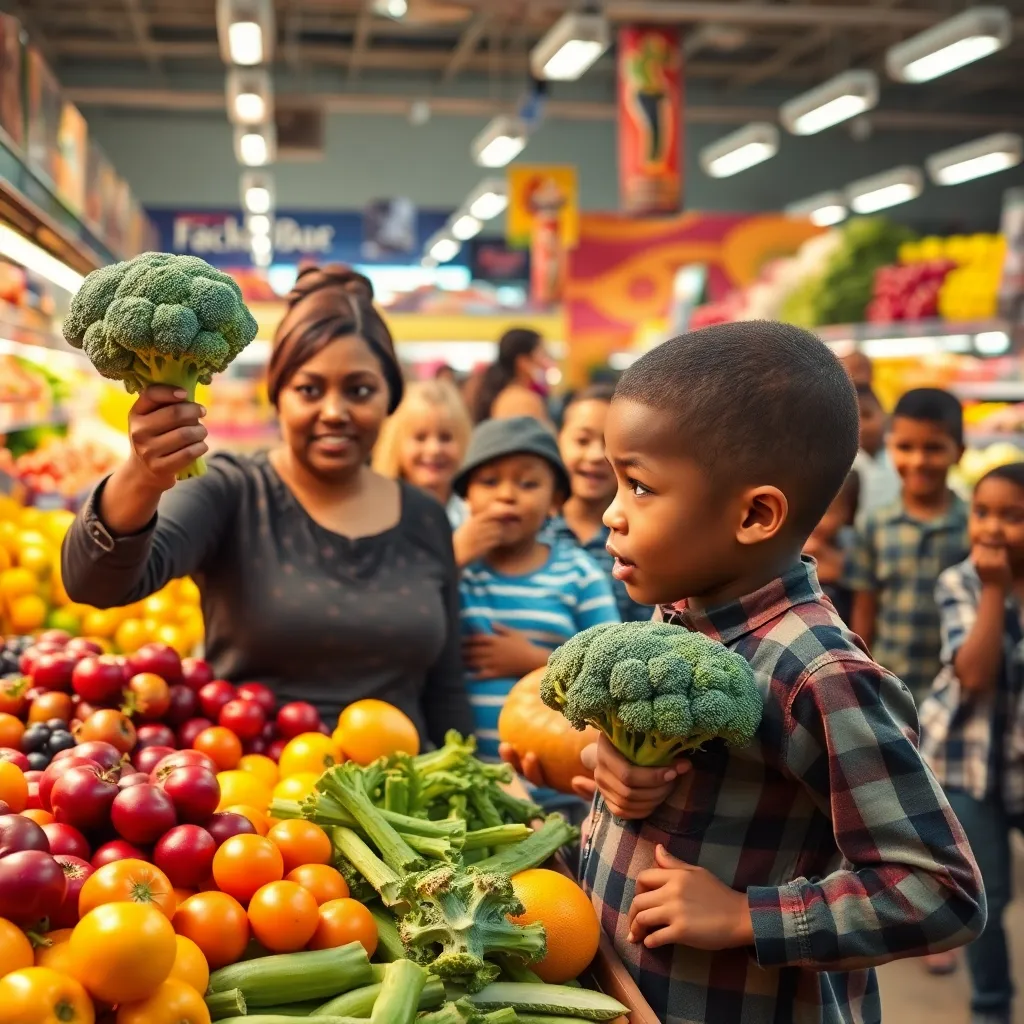The Saga of the Fussy Eater
Johannesburg, South Africa
In a world where food preferences can cause rifts wider than the Grand Canyon, a recent study sheds light on the age-old debate: why do some children eat like miniature gourmets while others seem to live on a diet of chicken nuggets and air? According to groundbreaking research, genetics plays a pivotal role in influencing whether a child is adventurous or as picky as a cat in a room full of cucumbers.
The Genetic Dinner Table
Imagine a dinner table where the menu is a battlefield. On one side, we have the brave souls, tackling sushi, kale, and quinoa like culinary warriors. On the other side, there’s the fussy eater, clutching their beloved mac and cheese like a security blanket. Researchers have found that variations in certain genes can determine these very preferences. The study suggests that some kids are simply born with a taste for adventure, while others might as well be wearing a “No Veggies Allowed” sign around their necks.
Parents everywhere can breathe a sigh of relief, knowing their child’s penchant for pizza is not purely a personal failing. For those whose children refuse to touch anything green, it’s not just the stubbornness of youth; it’s in their DNA!
A Grocery Store Meltdown
But what happens when these culinary inclinations meet the reality of grocery shopping? Enter the scene: a local supermarket in Johannesburg, where the produce section became ground zero for the Great Grocery Showdown. It all started innocently enough with a family outing to grab some essentials.
Natacha, a mother of two, found herself in the midst of a grocery store drama. Her fussy eater, little Timmy, stood in front of a vibrant display of broccoli as if it were the devil incarnate. “You’re going to eat this, Timmy!” she exclaimed, wielding a head of broccoli like a sword.
Timmy, undeterred, responded with a theatrical meltdown, leading to a scene reminiscent of a Shakespearean tragedy. “I will not! It’s green and it’s evil!” he declared, earning a few sympathetic glances from fellow shoppers who were in the aisle for their own battles.
The Power of Peer Pressure
Meanwhile, across the aisle, a group of adventurous eaters led by young Lucy was sampling exotic fruits. Their laughter and enthusiasm seemed to mock Timmy’s plight. “Try the dragon fruit, it’s amazing!” Lucy chirped, her mother smiling proudly at her child’s culinary bravery.
As Timmy’s cries reached a crescendo, a middle-aged man with a cart full of kale and quinoa stepped in, declaring, “You know, in my day, we didn’t have a choice! We ate what we were given!” His words hung in the air like an unwanted piece of broccoli on a plate.
The Genetic Influence Debate
This chaotic scene poses an interesting question: Does genetics excuse tantrums in the produce aisle? Or is it a mere excuse for culinary cowardice? Perhaps it’s a blend of both, with some kids genetically predisposed to prefer sugar over spinach, while others have adventuresome taste buds but are held back by the formidable wall of peer pressure.
The researchers behind the recent study suggest that understanding these genetic influences can help parents navigate the tricky terrain of childhood eating habits. “If parents know that fussy eating is often genetic, they might find it easier to cope with their kids’ preferences,” one researcher noted, while trying to peel a stubborn kiwi.
The Aftermath: A Battle of Wits
After what felt like an eternity, Natacha, powered by sheer determination and a love for her child, managed to convince Timmy to try a tiny bite of broccoli. The moment was monumental, akin to the first step on the Moon. “Just one bite!” she pleaded, holding her breath as if she were waiting for a significant scientific breakthrough.
Timmy took a bite, his face contorting like he had just tasted a lemon dipped in vinegar. “It’s… not terrible?” he finally admitted, and in that moment, a victory was declared. The produce aisle erupted in applause (or perhaps it was just a few amused chuckles from onlookers).
Moving Forward: A Culinary Journey
As the family made their way to the checkout, Timmy, emboldened by his small victory, declared, “Next, I want to try that dragon fruit!” The transformation was almost miraculous, akin to watching a caterpillar turn into a butterfly, or a fussy eater become a future food critic.
In the complex world of childhood eating habits, the intersection of genetics and environment creates a tapestry of preferences that can be both baffling and entertaining. Natacha’s grocery store saga is just one of many examples of how our genetic makeup influences our relationships with food.
Conclusion: The Ongoing Culinary Adventure
As families navigate the grocery aisles filled with colorful produce and unexpected tantrums, it’s crucial to remember that each child’s journey is unique. Whether they’re chomping on kale or avoiding anything green, understanding the genetic factors at play can help ease the stress of mealtime negotiations. And who knows? Perhaps the next trip to the grocery store will yield a culinary adventurer ready to take on the world, one broccoli floret at a time.
In the end, the battle of the dinner table may rage on, but with a little humor and a touch of understanding, we can all become champions of culinary exploration, even in the face of fussy eaters.
